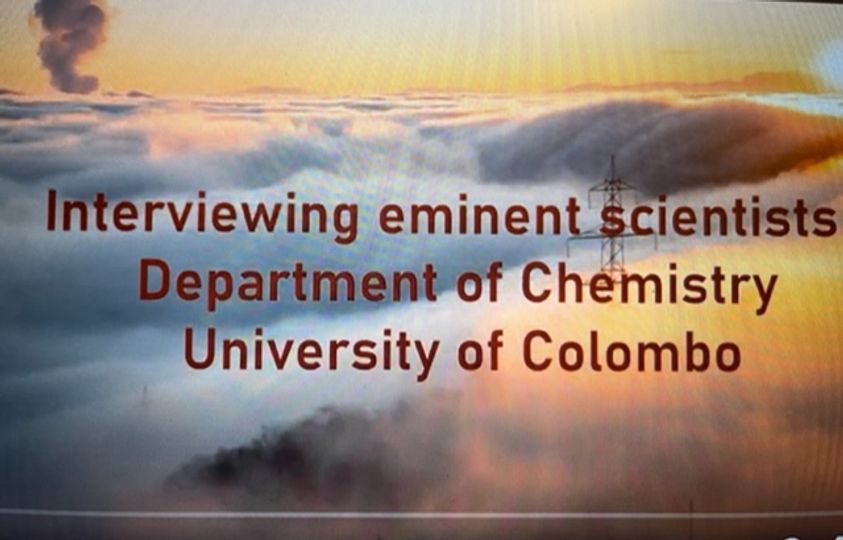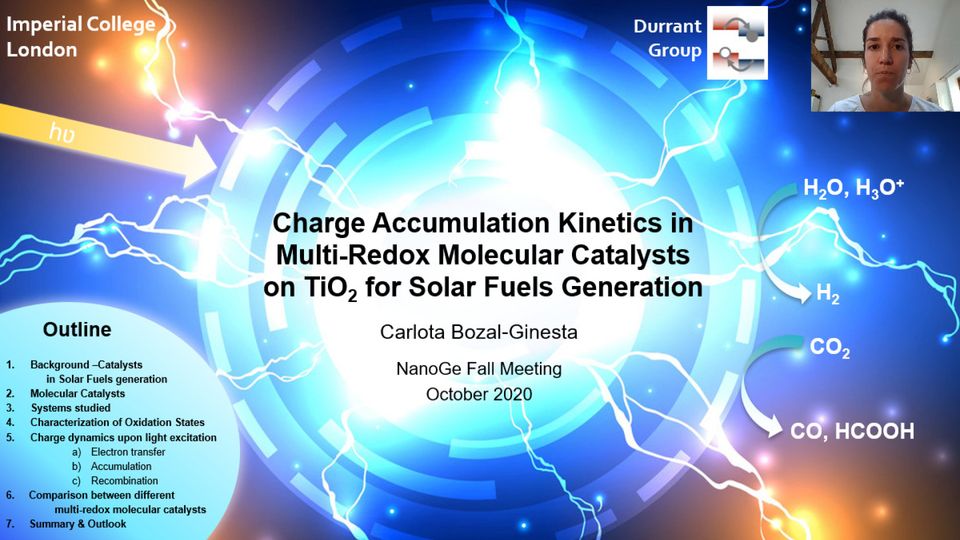Electrocatalytic and Photoelectrocatalytic Pathway
Water oxidation catalysis is a key challenge for both electrocatalytic and photoelectrocatalytic systems for green hydrogen synthesis from water. The water oxidation reaction is both thermodynamically and kinetically challenging, with the overpotential required to drive this reaction often being a key determinant of device performance. In this talk, Professor James Durrant discusses the potential importance of both electrocatalytic and photoelectrocatalytic water splitting in society’s transition to more sustainable energy systems. He goes on to talk about the potential of operando optical spectroelectrochemistry to analyse the redox reaction in metal oxides electrodes and photoelectrodes. He also gives examples of the insights gained from operando spectroelectrochemistry into the design and function of a selection of materials, including Iridium Oxide and Nickel/Iron Oxyhydroxide electrocatalysts, as well as Hematite, Bismuth vanadate and Strontium Titanate photoelectrodes/photocatalysts.
James giving interview to University of Colombo
Professor James Durrant talking about his interest in artificial photosynthesis and what it exactly it means,challenges needed to overcome to in order to produce molecular fuels that can compete with fossil fuels, will the developed countries be carbon-free by 2050.
Charge accumulation kinetics in photoelectrodes
The solar driven synthesis of sustainable fuels
Published on June 23, 2020, CINE WEBINAR
Professor James Durrant talks on the particular challenge of the solar driven synthesis of fuels and chemicals, and its potential role in reducing our dependence on fossil fuels. He also reviews approaches to artificial photosynthesis, and the lessons which can be learnt from biological photosynthesis, as well as challenges and opportunities for photovoltaics plus electrolysis.
Introduction to Organic Solar cells
Published on June 8, 2020, HOPV2020
Professor James Durrant talks about background of the organic solar cell with introduction includes the efficiency advances in organic solar cells with the ITIC and Y6 NFA's, compare charge carrier dynamics in organic and perovskite solar cells and talks about the energetics in organic solar cells.
Sacha Corby
Sacha Corby talking about her paper "Charge Separation, Band-Bending, and Recombination in WO3 Photoanodes"
Published on August 2019, Phy.Chem.Lett
Abstract
Next generation in PV technologies
Professor James Durrant talking about next generation PV technologies in a showcase of early stage climate mitigation technologies, in the yearly IBP discussion on climate change, in collaboration with the Grantham Institute for Climate Change and the Environment and the Energy Futures Lab at Imperial College London.



